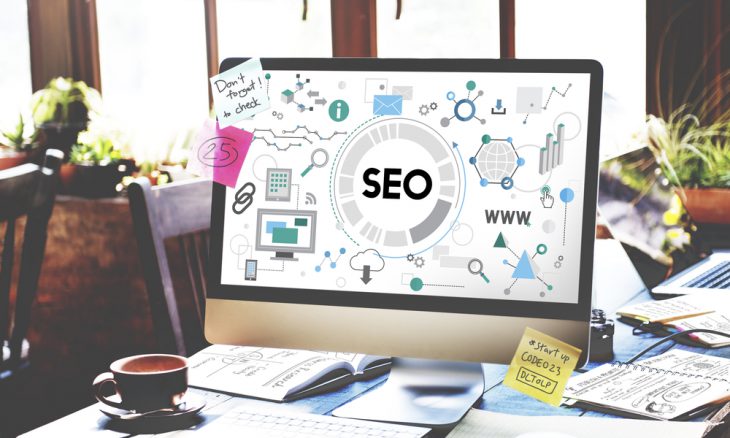What do you think of when you hear the term SEO? Many people think of keywords and focus a large part of their time trying to perfect the keywords they choose. If you’ve been focusing on keyword optimization and the results you want aren’t there, you should turn to some other things to significantly improve your SEO.
A good thing to keep in mind is that search engine algorithms rate the relevance of keywords on pages and in the meta data, but also evaluate other information like the time visitors spend on your site, the presence of broken links, the inbound and outbound links, bounce rate, the pages viewed and more.
To improve your website’s ranking, you need to get users to stay on your site and interact with your content. Do this by improving the usability and user experience on your website.
Take a look at these eight things you can do to significantly improve your SEO.
1. Provide high quality, useful content
The amount of time visitors spend on your website can affect your SEO ranking. Visitors tend to stay on your website for longer amount of time (also called dwell time) when you provide useful content. Research shows that content around 2,000 to 2,500 words ranks the highest in search engine results.
The word count of your content isn’t the only thing that impacts the SEO world–no one will read what you share if it doesn’t help them–but longer content does give you the ability to provide greater value, include more keywords, add outbound links, and get people to stay on your page and spend more time reading. High quality content is one of the most impactful SEO best practices to generate sales and generate business growth.
2. Improve load speed
Users might leave your website if the pages don’t load immediately–even waiting five seconds for a page to load hurts your dwell time. Pages that don’t open quickly increase your bounce rate, reducing the number of pages people view. Both of these things hurt your SEO ranking.
Some steps you can take to speed up your page load, from using caching plug-ins to making sure the code is streamlined and clean, will help your page load more quickly. Remember to minimize redirects and ensure all images are properly optimized to reduce file size, improving the speed of load. This is essential to business success whether you offer private jet rental services worldwide or have a small e-commerce clothing shop.
Make sure you use good, high quality images: according to research, quality images often increase conversion rates. Make sure to optimize images to generate empathy, improve trust, and create a better experience for the visitor.
Bing and Google both take page-loading speed into consideration when ranking websites.
3. Optimize your images
In addition to image sizing and file format, you can take other steps to ensure the images you use are on your side when it comes to SEO. When you do this, you’ll show that your content is relevant to search engines. Use keywords for the image file name, description, alt tag, title, and caption. This is just one of many ways you can make your e-commerce store a success.
4. Header tags
People don’t want to read a big block of text. Instead, format your content in a way that makes the user experience enjoyable. Readers will want to spend time reading content and come back again and again for more. This will signal your site’s relevance to search engines.
The proper use of header tags will break up the content you’re sharing into sections that make it easier to read your information. No one will bother reading what you wrote if you make it hard for them.
Keywords in header tags are a must; search engines rate them more heavily. Include relevant terms in your readers’ tags to improve your SEO ranking.
5. Include outbound links
You’ll make your content more relevant when you link to well-known sites that can provide readers with in-depth, helpful information they will want to read. When you link to authority websites, you increase the relevance of the content you write and the time readers spend on your website. This can also send positive signals about your site to the search engines.
6. Utilize various forms of multimedia
Do what you can to enrich your users’ experience and use various forms of multimedia. Images, slideshows, videos, and audio each allow you to deliver helpful information to your viewers in a way that suits them.
A variety of forms of multimedia also signal search engines that your site provides quality content, and it’s true: you have to put time and effort into your site to produce that interactive content.
One reason businesses are turning to video marketing is due to its high efficacy. It’s a crucial part of driving user engagement, generating more conversions. Utilizing video marketing leads to a 4.8 percent higher rate of conversion than 2.9 percent of websites that fail to utilize videos. Videos encourage visitors to spend more time on a site and allow them to retain more information too.
7. Remove any broken links
Does anyone like to get a 404 page when they’re hoping to read helpful information? Broken links negatively impact usability, and search engines see numerous broken links as a sign of a neglected site, negatively impacting SEO ranking.
The good news is that you don’t have to go through every page of your website to manually test the links. You can utilize apps and tools to help check for broken links, if you prefer.
8. Readability
It doesn’t matter how well-versed your audience is, no one wants to have to decipher the content on your website. The last thing you want is for your readers to give up and click away from your site because the content you wrote is too tough to digest.
Write in a way that is conversational so it’s useful to your readers. Experts believe Google takes readability into account as it ranks websites.
There are various tactics you can use to bump up your ranking in the search engines. Keep your focus on the tactics you can use to build a website that gives users an optimal experience, and you’ll find a boost in conversions and customer retention.






